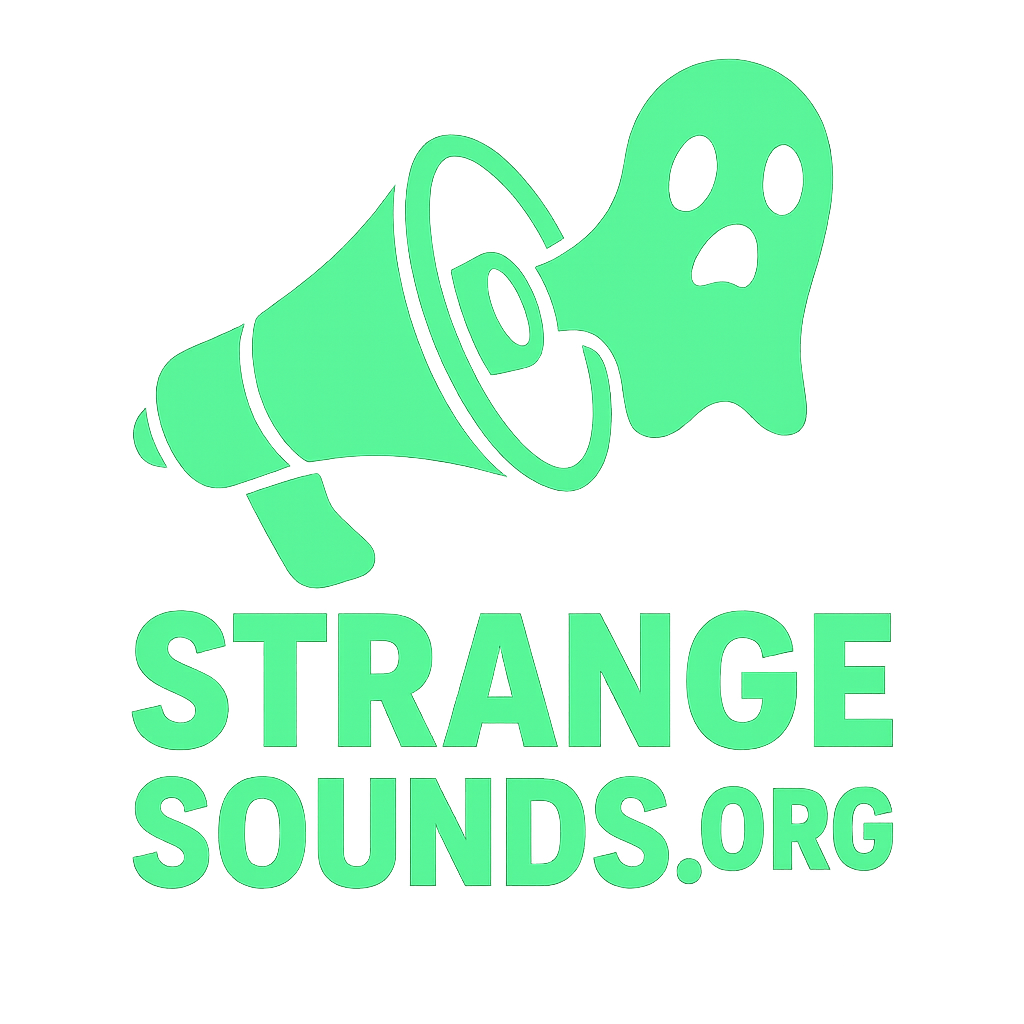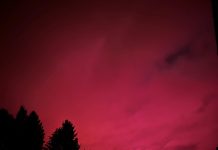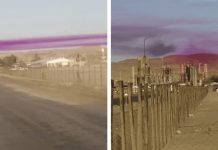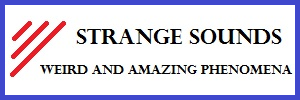
Updated on: · By Strange Sounds
Sunday night’s SpaceX Falcon 9 launch from Vandenberg Space Force Base sent a glowing, comet-like plume across the Western U.S., delighting skywatchers from Southern California to Arizona and beyond. The dusk timing created the famous “space jellyfish” effect as sunlight lit up the rocket’s expanding exhaust high in the upper atmosphere.

TL;DR: A Falcon 9 launched from Vandenberg on Sept 28, 2025 (~7:04 p.m. PDT), carrying Starlink satellites. The plume was visible for hundreds of miles and the booster landed on Of Course I Still Love You.
What People Saw
- San Diego & SoCal: Bright, fan-shaped glow with a sharp “core” and long tail, easily visible against twilight.
- Arizona & Las Vegas: A luminous streak evolving into a jellyfish-like cloud as the exhaust expanded at high altitude.
- Across the West: Reports and videos captured the expanding plume for several minutes as the rocket headed downrange over the Pacific.

Why the “Space Jellyfish” Happens
Just after sunset (or before sunrise), a rocket climbs into sunlight while observers on the ground are in darkness. Sunlight illuminates the exhaust plume, which expands in the thin upper atmosphere and takes on a jellyfish shape — bright core, wide translucent “body,” and a trailing “tail.” This alignment is why these displays are most common at dawn/dusk launches.

Mission Snapshot
- Vehicle: SpaceX Falcon 9
- Liftoff: Sept 28, 2025 at ~11:04 p.m. EDT / 7:04 p.m. PDT (02:04 UTC Sept 29) from LC-4E, Vandenberg.
- Payload: 28 Starlink satellites to low Earth orbit.
- Booster recovery: Drone ship Of Course I Still Love You ~8.5 minutes after liftoff.

When & Where to Watch Next Time
If you live in California, Nevada, Arizona, or Baja, launches from Vandenberg at dusk or dawn are often visible when skies are clear. Check local forecasts and mission schedules; twilight windows give the best chance of a dramatic plume.

This strange jellyfish phenomenon was also reported in the sky over Russia, Norway (spiral), and Florida in the past.
Photo Tips for the Jellyfish Effect
- Use a wide lens (24–35mm full-frame) and tripod.
- Start at ISO 400–800, f/2.8–f/4, 1/4–1 sec, then adapt.
- Compose with landmarks (coastline, desert silhouettes) for scale.
- Shoot RAW; the plume’s gradients edit nicely.

☄️ Support Strange Sounds
If this strange sky phenomenon blew your mind, imagine what your support can do!
Running StrangeSounds.org takes time, coffee, and a bit of apocalypse-proof hosting. If you enjoy our weird news, cosmic oddities, and WTF updates, consider fueling our work:
💙 Donate via PayPal
🔥 Give through Donorbox
Every contribution keeps Strange Sounds alive, weird, and free for everyone. Even small amounts help us stay independent and ad-free. 🌍
FAQ — SpaceX “Space Jellyfish”
What is the SpaceX “space jellyfish”?
The “space jellyfish” appears when a rocket’s exhaust plume is illuminated by sunlight high in the atmosphere during dusk or dawn. The expanding gases glow and spread into a jellyfish-like shape across the sky.
Where was the recent Falcon 9 jellyfish visible?
It was seen across Southern California (including San Diego), parts of Arizona, and Nevada. Twilight conditions made the plume especially bright and wide.
Why do rocket plumes look brighter at dusk or dawn?
At dusk or dawn the ground is dark, but the rocket quickly climbs into sunlight. That contrast makes the exhaust plume shine dramatically against the twilight sky.
Is the SpaceX jellyfish a UFO?
No. Although it can look otherworldly, it’s a known optical effect from rocket exhaust illuminated by the sun in thin upper-atmospheric air.
How can I see a jellyfish plume next time?
Watch launch schedules from Vandenberg Space Force Base (California) and Cape Canaveral (Florida). Your best chance is a launch near sunset or sunrise with clear skies and a dark foreground.












